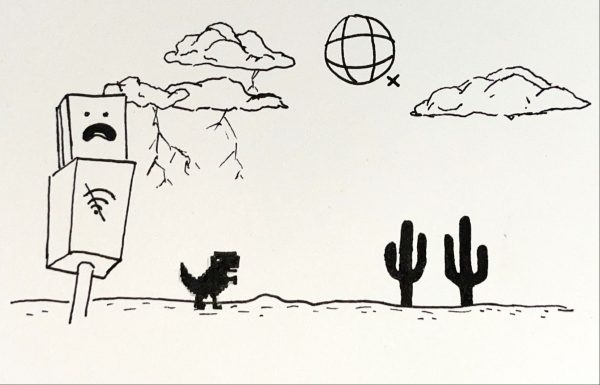Dispelling the oil lobby’s claims
March 30, 2005
Last week the Northern Star ran an editorial that opposed drilling for oil in Alaska’s Arctic National Wildlife Refuge; my last column was also about that same topic. In the following days, the Star published several letters to the editor that claimed drilling in the refuge wouldn’t be nearly as bad as we said. I’d like to continue the conversation by examining those claims.
Much of the controversy is about numbers: how much oil is there, how much of the refuge will be despoiled and how many jobs the project would create. This issue provides a perfect example of how the oil lobby plays fast and loose with the facts and how those numbers are picked up by well-meaning people and the media, who introduce them into the public conversation.
We’re bombarded with all kinds of numbers when it comes to oil drilling, so some vocabulary (and a clumsy analogy) is necessary here. Drilling for oil is like drinking a milkshake through a straw, except you’re not exactly sure where to put the straw, how deep the cup goes and you can’t get to every last drop. The entire amount of oil in a given area is referred to as “in-place oil.” The most optimistic estimate for ANWR’s in-place reserves is about 30-billion barrels.
But because of geographical and technological limitations, our straw can only reach less than half of that; we refer to that oil as being “technically recoverable.” Even more limiting is the fact that it’s not economically feasible to extract every last drop, so the refuge probably contains, as the Chicago Tribune estimates, about 8-billion barrels, or a few month’s worth. Theoretically, we could make it last longer if we sipped it, but American SUVs like to chug.
Another claim drilling advocates make is that it would be confined to 2,000 acres. What they don’t tell you is that none of those 2,000 acres have to be touching. Time magazine reported that not only can the acreage be spread out but the figure was arrived at by counting just the space where oil machinery would be touching the ground. Since pipelines are built a few feet off the ground, they only count the stilts that hold up the pipeline. That’s like me claiming a car takes up only 4 square feet of space because that’s how much area the tires take up where they contact the asphalt. This deception will allow oil machinery to spread out exponentially beyond 2,000 acres.
But what about jobs? Teamster President Jimmy Hoffa claimed that drilling will create 750,000 new jobs. What he failed to mention is that figure comes from a 14-year-old study commissioned by the oil lobby. The report’s assumptions no longer reflect today’s oil market. Furthermore, a 2002 study by Innovation and Information Consultants says the old study wasn’t even talking about jobs; it was talking about “job years” – in other words, drilling would provide jobs for somewhere between 50,000 and 100,000 people for seven to 12 years. To put that in perspective, the Department of Labor reports the economy generated 262,000 jobs last month alone.
It’s a wonder the oil lobby’s collective pants haven’t spontaneously combusted.
Columns reflect the opinion of the author and not necessarily that of the Northern Star staff.











